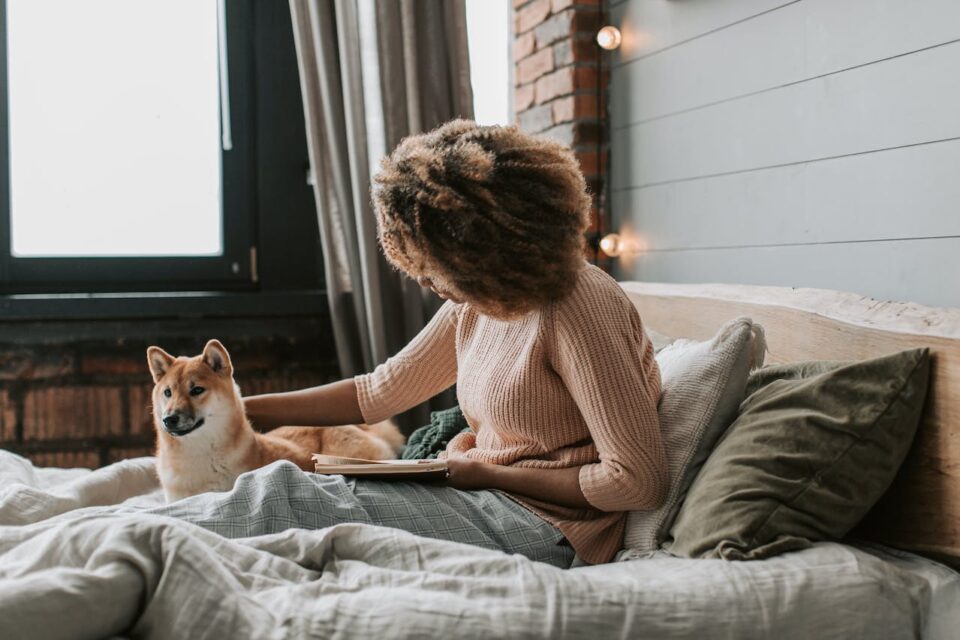How to Bandage a Dog Wound: Step-by-Step First Aid Guide
You’re out on a walk with your furry companion when suddenly, they step on something sharp. Your heart races as you notice a wound on their paw.
Bandaging a dog’s wound involves more than just covering the injury. It requires assessing the severity, cleaning the wound carefully, and applying the bandage in a way that promotes healing while ensuring your dog’s comfort. Each step is essential to prevent infection and further injury.
In this guide, you’ll learn a step-by-step approach to effectively bandage your dog’s wound. This knowledge is not just about immediate care but also about understanding the healing process and ensuring a smooth recovery.
Keep reading to equip yourself with essential first-aid skills that every dog owner should know.
Assessing the Wound
It’s essential to keep your dog calm during the assessment. As an owner, you should also take safety precautions to avoid getting bitten or scratched while handling the wound.
Gathering Necessary Supplies
Gather all essential items needed for bandaging the wound. This includes having a well-equipped first aid kit specifically for dogs.
Your kit should contain sterile bandages, antiseptics, and other wound care products. Keep these supplies in an easily accessible location and be familiar with the use of each item.
Related: How to Be Prepared for a Pet Emergency Before it Happens
Cleaning the Wound
Cleaning the wound is a critical step before applying any bandage. Use appropriate antiseptics or saline solutions for cleaning, and apply gentle techniques to avoid causing further injury.
The area around the wound should be dried carefully. If the wound is severe, do not attempt to clean it and seek immediate veterinary care.
Related: Critical Signs of Stress in Dogs: A Comprehensive Guide
Applying an Antiseptic
Choose a suitable antiseptic for dog wounds and apply it using techniques that ensure thorough coverage without causing discomfort.
Be cautious of products that are harmful to dogs, prevent your dog from licking the wound, and be aware of any allergic reactions your dog might have to certain antiseptics.
Bandaging Techniques
Use bandages that are suitable for dogs, ensuring they are neither too tight nor too loose. The bandage should be secure but should not restrict your dog’s movement. Different areas of the body may require specific bandaging techniques.
Monitoring the Wound

Regularly check the wound for signs of healing or worsening. Change the bandage as needed, and observe for any symptoms of infection or discomfort. Keep the bandaged area dry and clean. Record any changes or observations that might be useful for your veterinarian.
Preventing the Dog from Tampering with the Bandage
Consider using a protective collar or clothing to keep the bandage in place. Employ strategies to distract and comfort your dog, such as offering toys or gentle petting.
Supervising and limiting their activity is essential to prevent them from tampering with the bandage. Be aware of any signs of distress or agitation, and explore alternatives like soft collars or protective garments if traditional methods are unsuitable.
Need to make your dog more comfortable and calm them down from picking at the dressing? Try Calming Pet Spray by Gou Gou Pets!
When to Seek Veterinary Assistance
Knowing when to seek professional veterinary care is crucial. Be vigilant for signs of infection, complications, or behavioral changes indicating pain or discomfort in your dog.
Timely veterinary intervention can prevent further complications and ensure proper healing. Always be prepared for an emergency veterinary visit, especially if the wound’s condition appears to worsen.
Related: Natural Sedatives for Dogs: Calming Solutions for Anxious Pups
Caring for a Dog After Bandaging
Post-bandage care involves providing a comfortable resting space for your dog. Adjust their food, water, and exercise routines to accommodate their recovery.
Administer any prescribed medications and offer reassurance and gentle care during this period. Monitor their overall health and behavior to ensure they are recovering well.
Understanding the Healing Process
Familiarize yourself with the stages of wound healing in dogs. The expected timeline for healing can vary depending on the type of wound.
Factors such as nutrition, overall health, and proper wound care play a significant role in healing. Watch for signs of successful healing and consult your veterinarian for concerns.
Common Mistakes to Avoid
Avoid common mistakes such as using inappropriate cleaning methods or bandages. Be vigilant for signs of infection or complications and avoid over-tightening or frequently changing the bandage.
Refrain from using human medications or products on your dog, and ensure you follow all veterinary advice, especially regarding follow-up care.
Need a way to calm your dog down so you can take care of their injury? Make sure to use Calming Herbal Essential Oil Blend to make them more comfortable while you take care of their wound!
Ensuring the Best Care for Your Dog
Understanding how to bandage a dog wound correctly is a vital skill for every pet owner. The key steps involve assessing the wound, cleaning it properly, applying an antiseptic, and securing the bandage without causing discomfort to your dog. This process is crucial in protecting the wound from infection and ensuring a swift and smooth recovery.
Proper first aid plays a significant role in your dog’s health. It not only addresses immediate injuries but also promotes quicker healing and prevents complications. By being prepared to administer first aid, you can provide essential care in those critical moments following an injury.
As a responsible pet owner, it’s crucial to continue educating yourself and being prepared for any health issues your dog may encounter. This includes keeping a well-stocked first aid kit and being familiar with basic first aid techniques. Ongoing education in pet care and first aid ensures you are always ready to provide the best care for your furry friend.
~Veterinarian Recommended